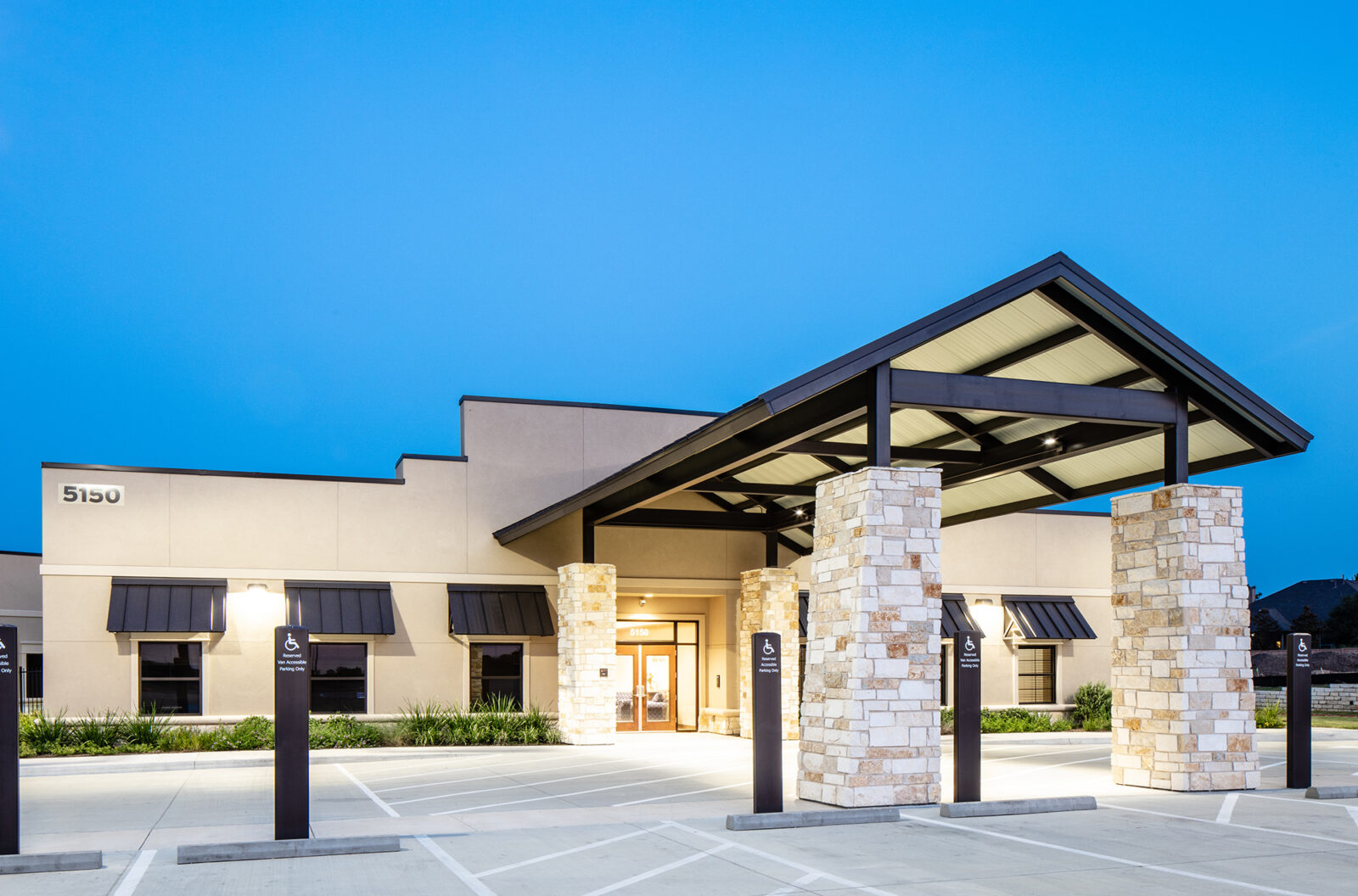Net Leases of Investment Real Estate, Not All They Are Cracked up to Be

**The original version of this essay appeared as an article by Capital Square’s founder and co-CEO, Louis Rogers, written for the DI Wire, published May 30, 2023.**
A wise man once said, “a net lease is the greatest ownership structure for real estate investments … until … until it isn’t.” What does that mean?
Part 1: An Introduction to Net Leases
Two basic types of leases are used for investment real estate: a net lease and a gross lease.
What Is a Net Lease?
A “net lease” is a passive ownership structure frequently used for investment real estate.
Net leases are commonly used in connection with retail properties, many industrial and some office properties. With a net lease, the owner/landlord receives the rent net of expenses. The owner does not bear most property expenses. Instead, the tenant typically is responsible for expenses. In a customary triple net lease, the tenant is responsible for taxes, insurance, maintenance and repairs. There are many variations, such as absolute and double net, where the tenant bears more or less of the expenses.
Who Manages a Net Lease?
In a net lease, the tenant manages their own real estate and operates within the premises. Because of this, there is very little for the owner/landlord to do, making net leases a passive ownership structure.
What is a Passive Ownership Structure?
A passive ownership structure can be very good for the owner, but it also can be very bad, depending on the circumstances. Net leases usually operate perfectly well; in good times, the absence of management hassles is a benefit. But in bad times, there is very little the owner can do to correct the situation.
What Happens in Good and Bad Times with Net Leased Real Estate?
Let’s use the classic, single-tenant net lease as an illustration.
An investment-grade tenant, Walgreens, for example, leases 100% of the property for use as a pharmacy. In good times, the owner receives the rent and reimbursements as set forth in the lease, no more and no less. (Spoiler alert, in an apartment lease, the owner does much better in good times.)
In the case of bad news, the name-brand pharmacy “goes dark” by closing the store. The tenant is still obligated under the lease and continues to pay the rent, but “going dark” can have seriously negative ramifications for the owner. This can trigger a cash flow sweep by the owner’s lender, depriving the owner of cash flow. It can also result in cancellation of necessary property and casualty insurance. And, finally, this is likely to result in serious erosion of value on a future sale. All of these are bad things that are completely outside the owner’s control. And what can the owner do? Not much. Going dark is not prohibited in many retail leases, which means the owner has no recourse against the tenant.
Lease terms vary depending on property type and region. In some cases, going dark may violate the lease. If so, the owner may be able to terminate the lease and regain possession. But terminating the lease may result in loss of the rent and, as a practical matter, many tenants who have gone dark will be unable to pay the rent. In the Walgreen’s example, this creditworthy tenant has substantial resources to continue paying the rent, but the same is not true with less established tenants.
Keep in mind that most owners need the rent to pay their debt service.
Also, in terminating the net lease, the owner will become obligated to pay taxes, insurance, maintenance and repair costs that were the tenant’s obligation under the lease. Thus, by terminating the lease, the owner may have no rent from the tenant and, at the same time, may have to pay debt services, taxes, insurance, maintenance and repair costs, all out of pocket. Unless the owner has substantial cash on hand, loss of the property to foreclosure may become a real possibility following a lease termination.
So, when it comes to investing in a net lease, to quote a famous movie cop, “Are you feeling lucky?”
Conversely, What Happens in Good and Bad Times with a Gross Lease of an Apartment Community?
Let’s say you own a 300-unit apartment community for the illustration below.
The owner/landlord is responsible for all expenses, hence the term “gross” lease. The cost of expenses is essentially built into the rent paid on an apartment lease, and because most apartment leases are in short duration, the owner typically can raise the rent to cover increases in operating expenses.
Unlike a passive net lease, apartment leases are very active. The owner can either self-manage or hire a third-party property manager.
At any given time, new tenants are coming to the apartment community and old tenants are leaving. During good times, the rent goes up. During bad times, the landlord has several levers to pull.
To maintain occupancy with this rolling tenant base, the landlord has the ability to:
- Cut the rent,
- Offer concessions,
- Provide gift cards and the like,
Through exceptional management and expertise, the owner can improve their position in spite of challenging economic times.
By contrast, the owner of a net leased property typically is stuck and can’t do very much to improve their situation short of finding a new tenant and, even then, usually at substantial out-of-pocket expense after leasing commissions and tenant improvement costs plus downtime and free rent.
During the Great Recession, most apartment communities functioned reasonably well; rents were adjusted downward when needed to retain occupancy, and there were very few foreclosures. This was not the case with many net leased properties, especially office properties that were wiped out along with their owners.
Part 2: Net Leases Melt Down, Bryan Mick’s ice cube example.
A net lease has a fixed term of years and typically optional extensions that the tenant may exercise to extend the term of the lease. The option to extend is exercised (or not) by the tenant. The landlord/owner cannot count on optional extensions being exercised.
At the end of the lease term, the landlord/owner has no assurance that the tenant will renew. If the tenant does not renew, the property will be vacant, and the rent will stop. In addition, the owner will have to re-tenant, usually at great expense after tenant improvement costs and leasing commissions. No rent may be received for a substantial period of downtime, and the replacement tenant may insist on a period of free rent.
Thus, as the lease melts down, so may the value of the property. So, it is said by famous due diligence officer, Bryan Mick, that a net lease is like an ice cube:
“As the years pass toward expiration, a net lease melts down and has the potential to lose value.”
If all that were not bad enough, a buyer is highly unlikely to pay full price for a net lease with a short remaining lease term. The situation can become even more dire upon approaching the repayment date on the owner’s loan, when a sale or refinance will be necessary to repay the debt.
Apartment Leases Roll On.
Compare this to an apartment lease. Apartment leases are typically short term, commonly one year. This means that every year many leases will be renewed, and many leases will be replaced with new tenants. Apartments are not 100% occupied or 100% vacant; they remain mostly occupied and roll through with new tenants as a part of the business plan. They bring full value on sale with a rolling rent roll. Compare this to a net leased investment with a short lease maturity that is unlikely to bring full price.
What About Rent Increases?
Many net leases have fixed rent increases – so-called, “rent bumps.” It is typical to have either annual increases or increases over time. For example, 2% per year or 10% every five years. This tends to be satisfactory except in periods of rapid inflation.
In an apartment lease, the rent can be reset to market very quickly since net leases are of short duration (typically one year). So, in periods of rapid inflation, apartment rents go up quickly while net lease rent increases are fixed.
Take the recently passed period of hyper (12%) inflation. How would the owner feel about a net lease with 10% rent increases every five years? With very high inflation, an apartment lease would be preferred over a net lease that lost value.
Part 3: Compare Single and Multi-tenant Leases
Another nuance: in a single tenant lease, there is only one tenant. You are 100% occupied or 100% vacant!
If the single tenant fails, the investment is likely to fail.
In a multi-tenant investment, the owner/landlord has a cushion via the rent and reimbursements from numerous tenants. The same is true in multifamily properties, where there are a large number of tenants (300 tenants, for example) to provide a big cushion. This makes multifamily and multi-tenant properties less risky from a tenant standpoint because of the larger number of tenants paying rent and reimbursements.
Again, to quote our movie cop, “Are you feeling lucky?” with a property that is either 100% occupied or 100% vacant?
Part 4: Conclusions on Net Leases vs. Gross Leases
After nearly 40 years as a real estate advisor and investor, I conclude that a gross leased multi-tenant apartment community is preferable for many investors to a net leased investment in many cases. While circumstances will vary, this conclusion is an excellent rule of thumb to be used when analyzing alternative investment options.
Gross apartment leases are not a panacea; they require expertise with the asset class and the willingness to actively manage or hire and oversee a property manager.
The analysis follows:
- Economically, net leases tend to generate strong initial cash flow but less proceeds on sale as the lease loses term and approaches expiration. The result is typically the opposite in an apartment property (gross lease) that tends to generate less initial cash flow but increase cash flow steadily over time and, then, generates much greater proceeds on sale.
While most net leases operate without issues, when a net lease goes bad, it is very bad and harder to repair. Even with exceptional management expertise, frequently, there is very little that can be done to correct the situation.
And single tenant properties are good until they are not; then, they can go from 100% leased to 100% vacant! Multi-tenant properties provide a much greater cushion.
- Economically, gross leased apartment properties tend to start out lower in initial cash flow. But they typically build cash flow steadily over time as the leases are marked to market. And they tend to generate substantially greater proceeds on sale based in large part on the compounding of rent increases and growth in net operating income. Net leases typically produce the opposite results.
In addition, gross leased apartment communities have more optionality. During bad times, the landlord has several levers to pull to maintain occupancy. Through exceptional management, the owner can improve their economic position in spite of challenging economic times. The owner of a net lease is usually unable to pull such levers.
Also, annual leases mean that apartment rents can be adjusted frequently. In times of inflation, the rent goes up rapidly; in bad times, the rent can be adjusted downward to retain occupancy. Compare this to a net lease with fixed rental increases that are preestablished in the lease many years in advance. The rent set forth in the lease is the owner’s best day—no more, no less; compared to an apartment lease that can go to market in good times and equal or exceed the rate of inflation.
And multi-tenant properties provide additional flexibility; new tenants come and go as a part of the business plan. Compare this to a single tenant property that can go from 100% leased to 100% vacant in a nanosecond!
A Final Real-World Illustration
The attributes of net vs. gross leases have a profound impact on the selection of investment programs. Let’s analyze a real-world example of a customary Delaware statutory trust, or DST, program for investors seeking tax deferral under Section 1031 on the sale of an investment property.
Based on my personal experiences and observations over several decades, there tends to be a dividing line between investors who:
- need to live on distributions from the investment, and
- those who have less need for cash flow from initial distributions, instead preferring growth of income and capital appreciation.
There is a tendency to invest in net leased programs for investors who have greater need for immediate cash flow. Alternatively, many wealthier investors tend to invest in multifamily programs with gross leases because they favor growth of income and capital appreciation over initial cash flow.
This is not to critique different types of investors but to demonstrate that the attributes of net vs. gross leases have a real, tangible bearing on investment programs in the real world. It is a testament to the DST industry that different sponsors can tailor investment programs, and financial advisors are able to select desirable programs that meet the needs of various types of investors.
Capital Square has sponsored over 135 investment offerings of over 160 individual properties including both net leased investments and gross leased apartment communities. Our investment experience at Capital Square over the past eleven years supports the conclusions above.
It should go without saying: caveat emptor, let the buyer beware. Circumstances will differ, and investors should seek the guidance of qualified real estate and financial professionals before making an investment.
Learn more about Capital Square’s vehicles for real estate investment.

